Şakşuka (Turkish fried vegetables) is a delightful Mediterranean dish that combines roasted eggplants, tomatoes, and bell peppers with a blend of herbs and spices. This vegetarian option is perfect as a side dish or a standalone appetiser, making it a versatile addition to any meal.
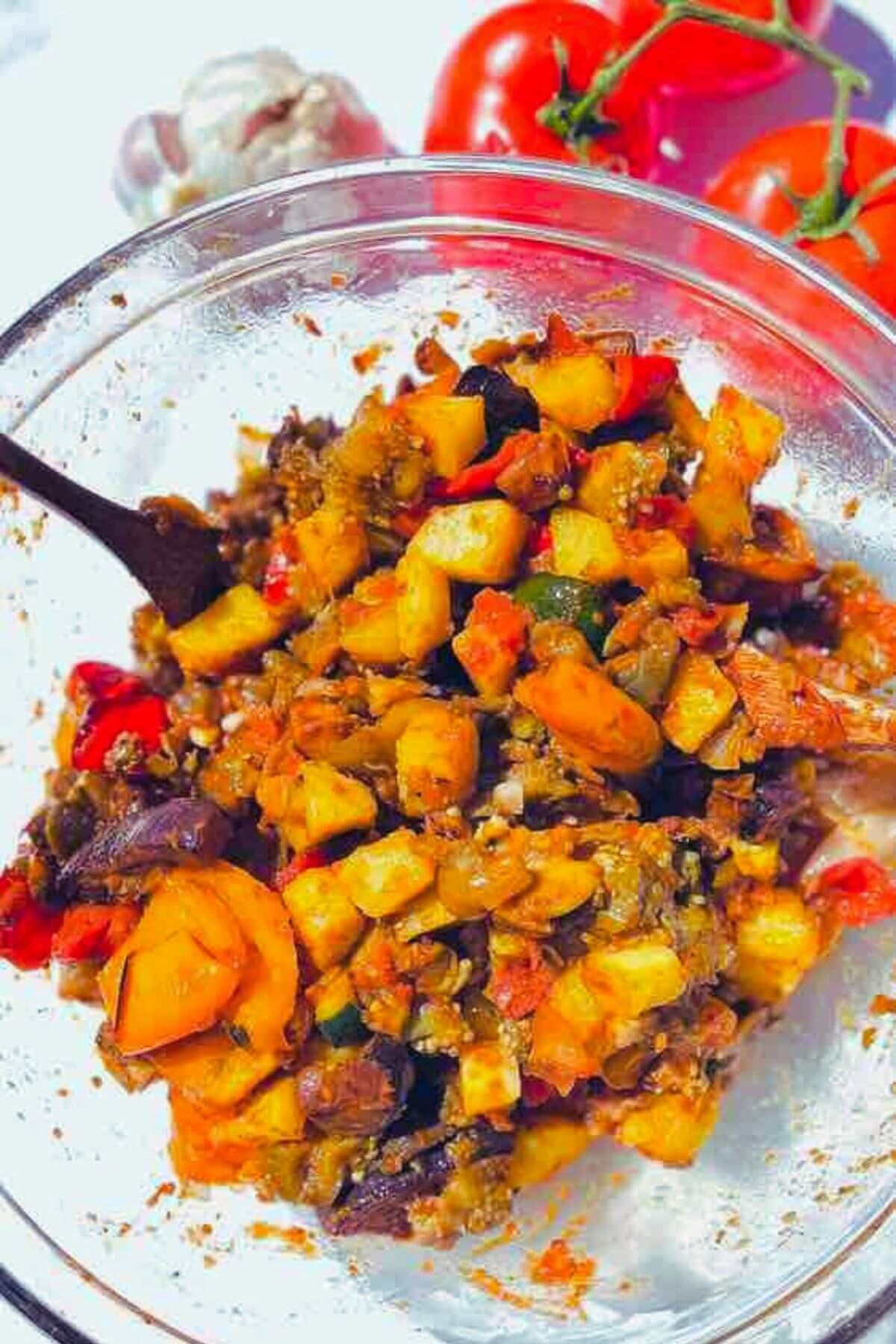
This veggie dish is ideal for a fast meal on busy days. Whether served as a main course or a snack, it's bound to leave everyone wanting more. You should also try our easy lemon butter chicken with garlic, Easy 15-minute Udon Noodles, Turkey Mince Noodles, or Gnocchi made easy with Pesto and Zucchini for a quick, delicious lunch or dinner.
For a delicious and satisfying side dish, Turkish Şakşuka is a great option. It’s a simple dish that comes together in under an hour and can be served warm or cold. Whether you enjoy it as a side for grilled meats, with fresh bread, or as part of a meze spread, it’s a versatile addition to any meal.
Another great recipe is pide – a Turkish flatbread that’s soft on the inside with a crisp, golden crust. It’s easy to customise with different toppings and works well as a main dish or a snack. This Turkish Bulgur Pilav recipe makes a great side, especially when paired with keto chicken with spinach and peppers. You can also try oven-roasted cauliflower and hummus for a light and tasty addition, or my finger-licking kefta tacos.
For more ideas, dive into my Turkish recipe collection or give my homemade sweetcorn, tuna pizza a try for something a little more unique! Also, check out my easy homemade Turkish borek or Turkish meatball with potatoes, they are delish.
Jump to:
- 💗 Why This Recipe Works
- What is Şakşuka?
- Difference between Şakşuka and Shakshuka
- 🥘 Ingredients
- 👩🍳 How to Make Şakşuka (Turkish fried vegetables)
- ♻️ Substitutions
- Variations
- 💭 Expert Tips
- The best kind of drinks that go well with Şakşuka
- ❓ FAQs
- If You Enjoyed This Recipe, You Will Love These Too
- Delicious Şakşuka: A Mediterranean recipe
💗 Why This Recipe Works
You'll love this Şakşuka recipe because it's easy to make and full of healthy ingredients like roasted eggplants, tomatoes, and bell peppers. The tasty mix of herbs and spices makes it delicious.
Enjoy it as a side dish, a starter, or even as a main dish. This vegetarian recipe is great for any occasion, from family dinners to parties, and is a nice way to try Mediterranean food. It's also perfect for meal prep since it keeps well and tastes even better over time.
What is Şakşuka?
Şakşuka, also spelt "saksuka," has its origins in the Middle East, particularly Turkey. It is a traditional Turkish dish made from a mix of sautéed vegetables, often including eggplant, peppers, and tomatoes, with spices and sometimes garlic. The name and dish reflect the rich culinary traditions of the region.
Difference between Şakşuka and Shakshuka
Saksuka and shakshuka are quite different:
- Saksuka: This Turkish dish is a vegetable medley, typically featuring ingredients like eggplant, peppers, tomatoes, and spices. It's usually served cold or at room temperature.
- Shakshuka: Originating from North Africa and the Middle East, shakshuka consists of poached eggs cooked in a spicy tomato and pepper sauce. It’s typically served hot.
So, while both are delicious, Şakşuka is a cold vegetable dish, and Shakshuka is a hot dish with eggs.
🥘 Ingredients
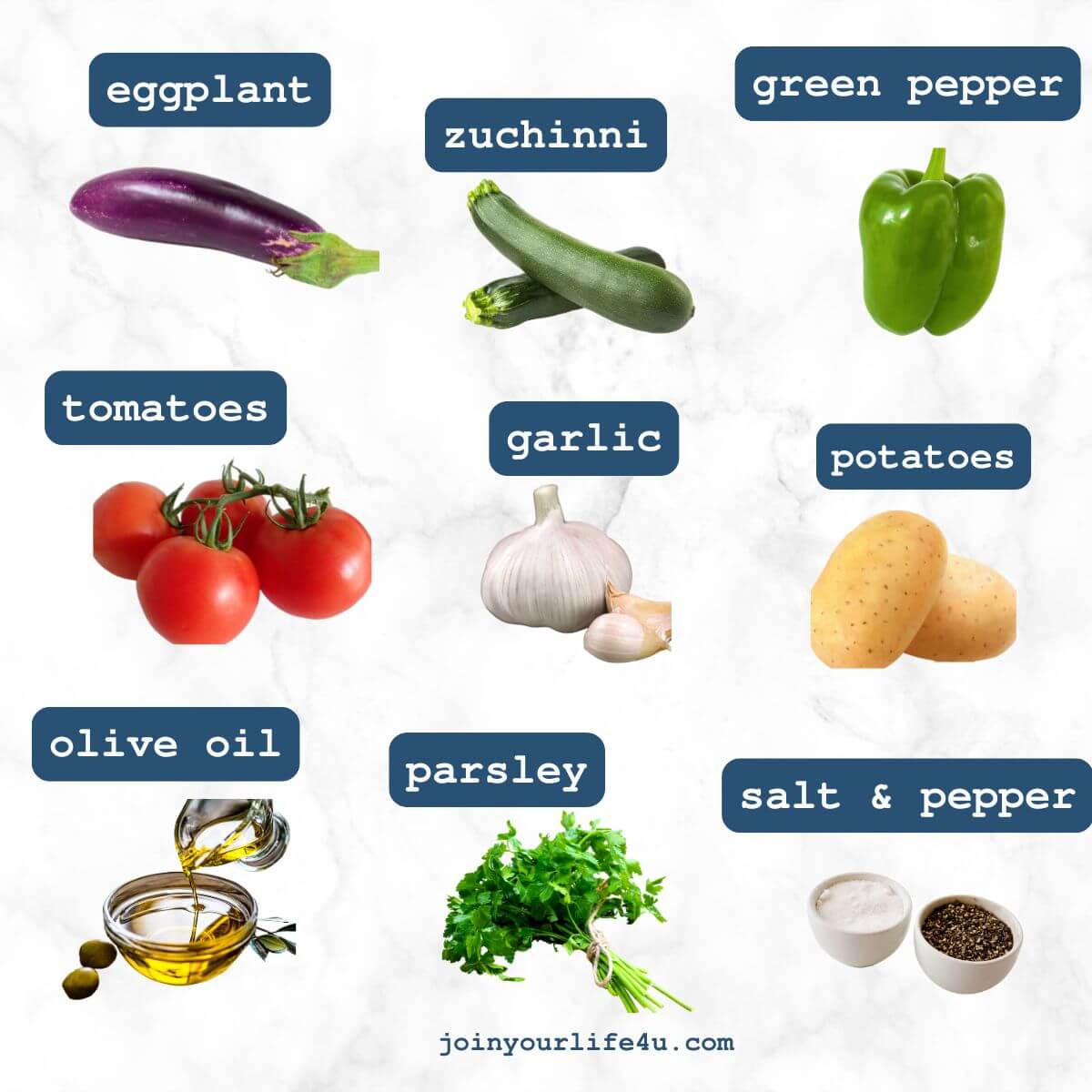
*See the recipe card for full information on ingredients and quantities.
👩🍳 How to Make Şakşuka (Turkish fried vegetables)
Start by prepping all your ingredients. Get your vegetables ready, measure the olive oil and seasonings, and set up your tools like a pan, mixing bowl, and wooden spoon.
Having everything ready before you begin makes cooking smooth and stress-free. A little prep ensures your saksuka comes together quickly and easily, with rich and delicious results!

Step 1: Heat extra virgin olive oil in a pan over medium heat. Fry the potatoes until golden, then set aside. Fry the eggplant in the same oil until soft, then drain on a paper towel.
Step 2: Roast zucchini and green peppers in the oven with salt and black pepper until tender.

Step 3: Sauté tomatoes, garlic, and red chilli in olive oil until soft and combined.
Step 4: Mix everything in a bowl, sprinkle with parsley, and serve warm. Enjoy this classic Turkish meze with garlic yoghurt on the side!
♻️ Substitutions
- Eggplants: You can substitute mushrooms for a different texture.
- Zucchini: Use yellow squash if you prefer.
- Potatoes: Sweet potatoes or cauliflower can be used as a substitute.
- Olive Oil: Can be substituted with avocado oil or grapeseed oil.
- Tomatoes: Canned diced tomatoes or tomato paste can be used if fresh tomatoes aren't available.
- Red Chilli: Use jalapeño or cayenne pepper for a similar kick.
- Parsley: Cilantro or basil can add a fresh, aromatic touch.
- Garlic: Garlic powder or shallots can be used if fresh garlic isn’t available.
- Yoghurt with Garlic: A dollop of sour cream or tzatziki can serve as a tasty alternative.
Variations
- Add cooked chickpeas, lentils, or ground beef to make it heartier.
- Top with crumbled feta or goat cheese for a creamy finish.
- Swap in carrots, cauliflower, or mushrooms for a change in texture and taste.
- Add smoked paprika, cumin, or coriander for an extra kick
- Sprinkle with toasted pine nuts, almonds, or sesame seeds for added crunch.
- Use fresh basil, mint, or cilantro instead of parsley.
- Use a rich marinara or spicy arrabbiata sauce in place of fresh tomatoes for a saucier version.
- Use the mixture to stuff bell peppers or eggplants and bake until tender.
- Serve over a bed of quinoa, Turkish Bulgur Pilav, or couscous to make it a complete meal.
- Substitute the yoghurt with a vegan alternative like coconut yoghurt or cashew cream.
💭 Expert Tips
- Cut Veggies Evenly: Make sure your eggplants, zucchinis, and other veggies are chopped the same size. This helps them cook evenly.
- Cook Veggies Slowly: Take your time cooking the veggies with garlic, herbs, and spices. This gives them lots of flavour.
- Keep Some Crunch: Cook the veggies until they're soft but still a little firm. You want them tender but not mushy.

The best kind of drinks that go well with Şakşuka
- Mint Lemonade
- Tzatziki Yoghurt Drink
- Sauvignon Blanc or Pinot Grigio (White Wine)
- Pomegranate Juice
- Sparkling Water with Citrus
❓ FAQs
Saksuka is a traditional Turkish dish made with sautéed eggplant, zucchini, peppers, and tomatoes, often flavoured with garlic and spices. It’s typically served as a meze (appetiser) or side dish, sometimes topped with yoghurt or herbs.
Saksuka is often served as part of a meze spread alongside dishes like hummus, baba ghanoush, or fresh bread: Easy Braided Milk Bread (Soft, Fluffy & Perfect for Beginners!). It can also be enjoyed as a side dish with grilled meats, like Roast Lamb stuffed with Rosemary and Garlic or Salmon en Papillote ( Salmon in Parchment) Recipe, Lebanese Rice and Broken Vermicelli, or Turkish Bulgur Pilav.
Store leftover Şakşuka in an airtight container in the fridge for up to 3 days—the flavours get better as they sit. You can also freeze it for up to 3 months. Just thaw in the fridge overnight and reheat gently on the stove over low heat, adding a splash of water or olive oil if needed. The microwave works too—just cover and heat until warm. Leftovers are great as a side or mixed into pasta, bulgur, or rice for a quick meal
If You Enjoyed This Recipe, You Will Love These Too
Tried this recipe? Give it a star rating below! ⭐⭐⭐⭐⭐
HUNGRY FOR MORE? Subscribe to my newsletter and follow along on Facebook, Pinterest, and Instagram for the latest updates.

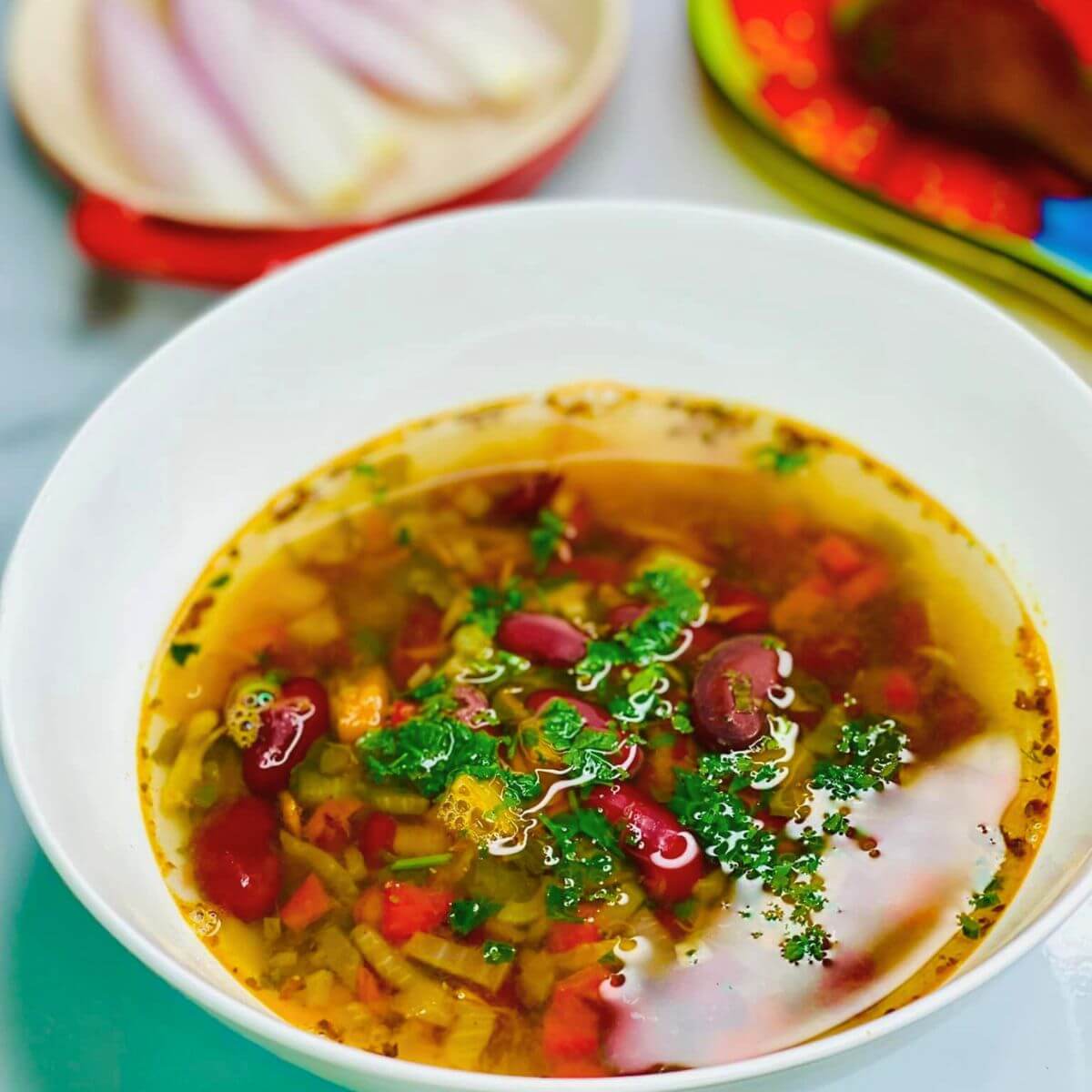


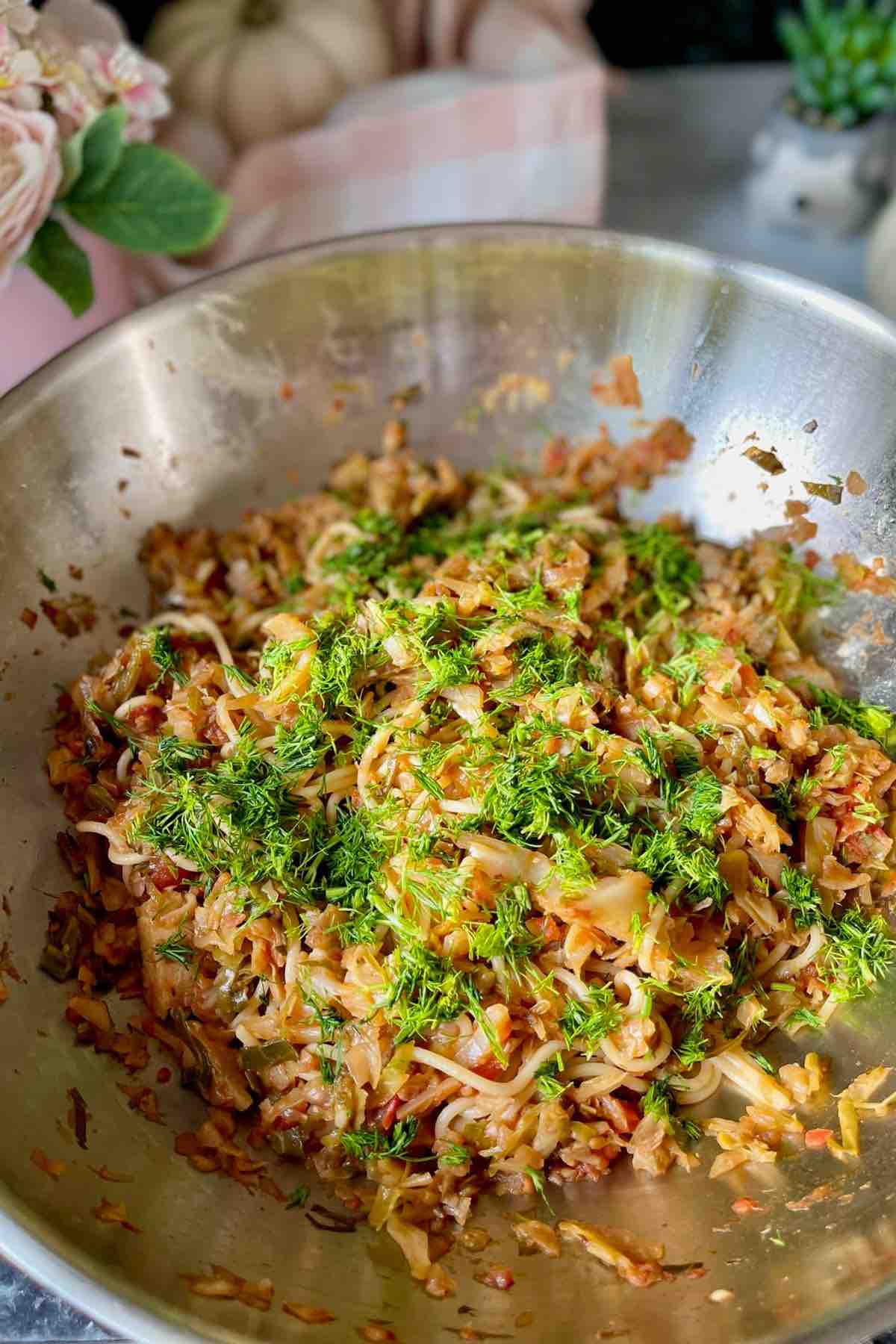



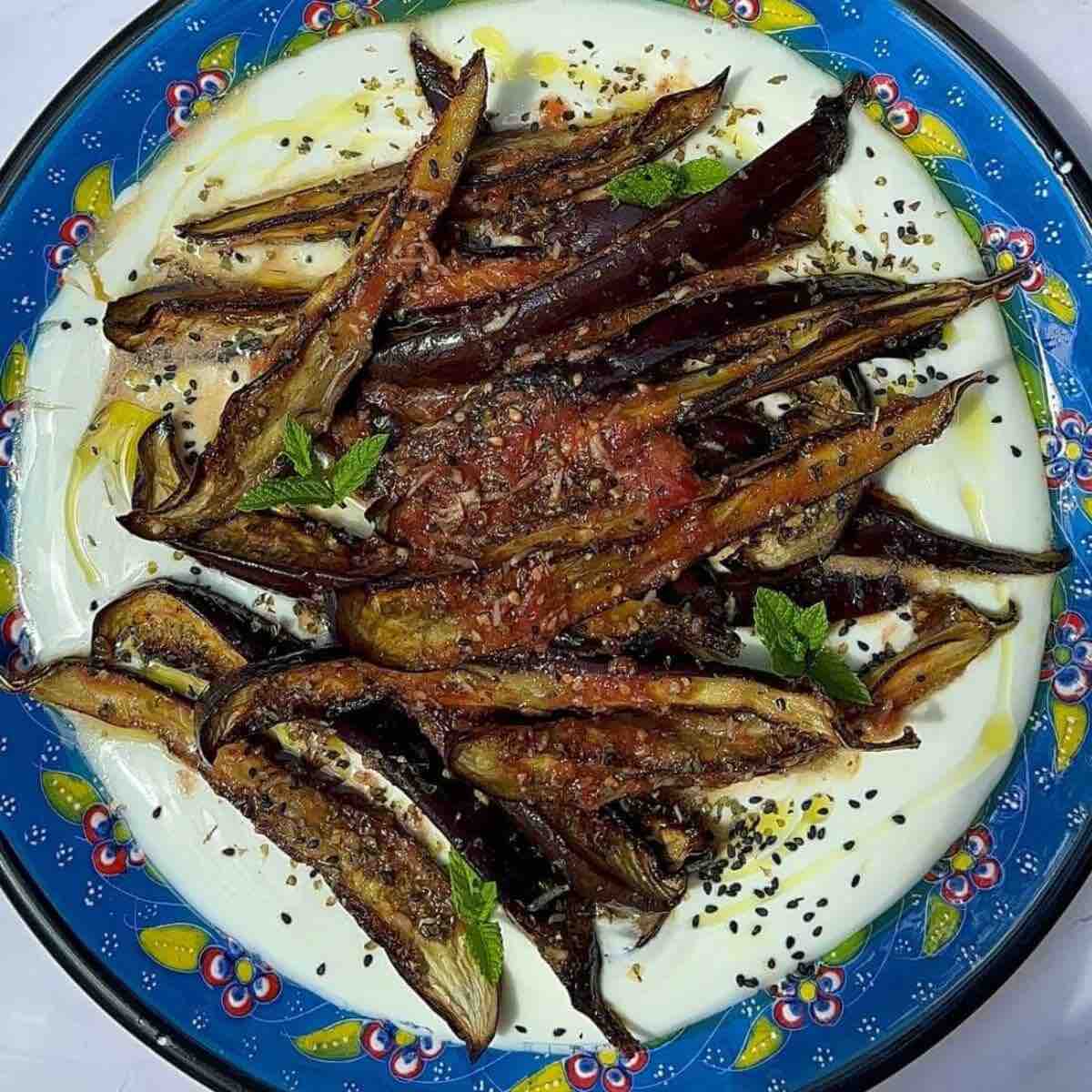

Claudia Ciorteanu says
My family loved this!
Criss says
My family loved this!
Swathi says
This is one of my favorite breakfast dish, I loved your version. Thanks for sharing with me.
Nora says
First time I made Shakshuka and it turned out perfectly! The whole family loved it!
Nicole Kendrick says
This is so good! I've never had saksuka before, but I love veggies, so I gave it a shot. It's already a favorite.
Krystle says
Such a great flavor! This is a dish both the veg and meat eaters in our family like.
Juyali says
Such a delicious and comforting recipe! I've been trying to make more "mediterranean" recipes, and I'm glad I found yours. 🙂
Andrea says
love how flavorful this dish turned out! so tasty and delicious!
Nora says
What a wonderful, flavorful, veggie dish! Made a tzatziki to accompany it. It was wonderful!
Mary says
Delicious used as filling for stuffed bell peppers. I used a red jalapeno which gave the dish the perfect kick. Thanks!